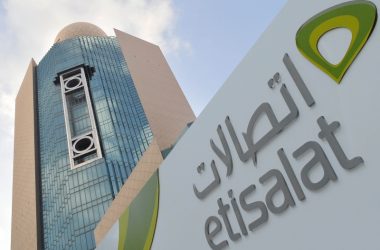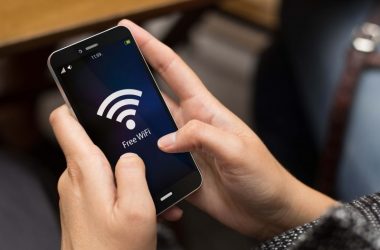 The structured cabling market in Middle East is growing 2-3 times faster than the global market average growth, and 3M is already a significant player, being among the top 4 in all the main countries, Martin Parsons, Marketing Manager, Electro-Communications Business, Middle East, 3M highlighted his company’s market strategy and opportunities to tap, exclusively while interacting with Faiz Askari, Head—Online & Features, Network World Middle East.
The structured cabling market in Middle East is growing 2-3 times faster than the global market average growth, and 3M is already a significant player, being among the top 4 in all the main countries, Martin Parsons, Marketing Manager, Electro-Communications Business, Middle East, 3M highlighted his company’s market strategy and opportunities to tap, exclusively while interacting with Faiz Askari, Head—Online & Features, Network World Middle East.
How do you see the potential of copper and fibre optics communications for a growing market like Middle East?
The structured cabling market in Middle East is expected to grow double digit till at least 2010, and together with Asia is the fastest growing region in the world. So the perspectives are very promising. In terms of technologies' adoption, there'll be a slight steady growth of Cat.6 and a fast increase of Cat.6A, due to the finalization of the international standard. Fibre optics will remain limited in terms of Fiber-to-the-Desk applications, but will expand significantly due to the data centers deployments, in which fibre constitutes the high majority of the cabling system.
Nevertheless, due to Green ICT trends and policies, Fiber-to-the-Desk might become more and more significant, helping customers to build local area networks which are by far more sustainable.
What is 3M's strategy to surge ahead in this market?
3M has a longstanding commitment to sustainable development through environmental protection, social responsibility and economic progress. To us, that means meeting the needs of society today, while respecting the ability of future generations to meet their needs. We recognize that the company’s long-term success springs from adopting and implementing the principles of sustainable development: stewardship to the environment, contributions to society, and to the creation of economic value and worth. At the same time, we recognize that only by continuing to be a viable and successful enterprise can we continue to be a positive contributor to sustainable development in the Gulf.
3M strategy is to grow in the international market by expanding its portfolio in order to address the main trends happening in the marketplace. Particularly, we'll enhance our solutions for high speed copper and fiber office networks, we'll broaden our offer for copper and fiber data centers and for residential networks.
An area that 3M has addressed, through its Environmental, Health and Safety (EHS) Management System because of ongoing economical, social and legislative pressures on suppliers, purchasers and users of IT equipment to 'go green' and reduce the harmful environmental aspects of computing. The IT industry is reputed to issue 2% of the world's CO2 – the same as the much maligned airline industry. Increasing legislation also means that 'going green' is no longer an optional extra but, increasingly, a legal imperative.
Its impact on ICT permeates all the way through the network, right down to cabling and component levels. Moreover, there is an increasing emphasis on the total cost of ownership and the impact of a product throughout its life, rather than just focusing on the short term and initial purchase price. Fortunately, going green does not have to cost the earth, in more than one sense of the phrase.
Which industry verticals do you target for 3M Communication Markets Division in the Middle East region?
3M intends to keep targeting the whole Premises market arena, i.e. commercial buildings, residential networks and data centers. On top of this 3M CMD is heavily addressing the FTTx market related to the Next Generation Networks deployment, by providing a full range of solutions for connection, splicing, protection and distribution of fibre optic networks
How the structured cabling market is evolving here, what positioning you want to achieve in this market?
A large percentage of the structured cabling installations in the Gulf are now undertaken in the residential segment, with fibre to the home (FTTH) starting to emerge more with regulation in place. We are seeing a surge in projects for Fibre Optics and Data Centers continue to increase across many of the GCC countries. The acceptance of new technologies is becoming high in the Gulf as there is more focus on architecture, design and technology. All of these dynamics in the market, 3M addresses through its rich product portfolio and our on going research and development, and manufacturing sites spread across US, Europe, Asia and Far East .
What market challenges do you see which needs to be tackled?
As an industry there are a number of challenges, as an example, attracting and retaining the required skills to deploy these demanding projects. Some factors that affect the migration of these skills, is the continuous increasing cost of living in the Gulf and the sustainable skills development of resources.
Another challenge is from the competition of low-cost / low-quality no-name products that are more and more adopted in the construction market. The response to this challenge can only come from raising the bar of competition, constantly offering next generation solutions to provide greater value to the network users and contractors. The move towards Cat.6A copper cabling will contribute to this significantly.
Other challenges are coming from the need to respond to the requirements for 'green' solutions and suppliers in the construction market for new building and in the data center market.
Finally a big challenge is about being a player whose mission is to promote TCO (Total Cost of Ownership) effective solutions which are able to deliver long-term benefits to the users and customers.
What future do you foresee in this market?
As I said before, the structured cabling market in Middle East will keep expanding at a double digit growth rate at least in the next 3 years, due to the very positive trend in the construction market. Therefore, Middle East is and will be one of the fastest growing regions in the world and 3M is committed to the Middle East and is focused on long term local sustainability.





